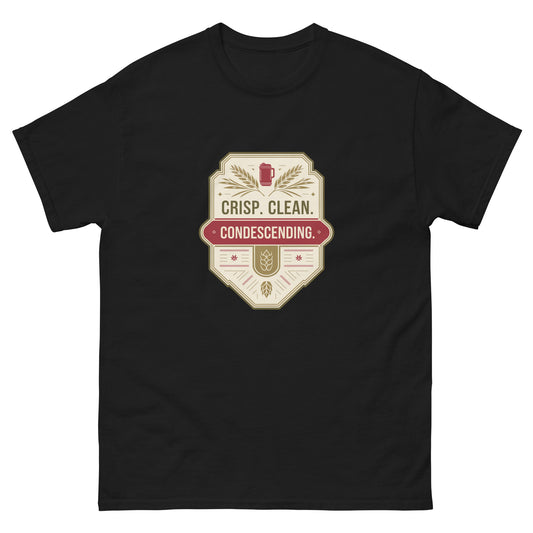Coopers brewers swear by it — ready to brew a real lager without stuffing it up?
Share
Why One Yeast Strain Could Be the Difference Between ‘Not Bad’ and ‘Bloody Brilliant’
Lager brewing gets a bad rap for being fiddly, slow, and “only for the pros.” But here's the real story — with the right yeast, the right advice, and a few smart moves, your very first batch can come out clean, crisp, and worth a repeat pour. And it all starts with this yeast packet right here.

S23 Saflager Lager Yeast is a bottom-fermenting legend that’s helped countless shed-brewers crack the code to perfect, drinkable lagers. With a clean finish and a mellow maltiness, it’s the yeast we recommend when someone walks into the store saying, “I want to have a crack at brewing my first real lager.”
Start Simple. Nail It. Then Brew It Again for Your Mates.
Lager brewing is all about precision — but that doesn’t mean it has to be confusing. S23 gives you a wider temperature window (between 9–15°C), which means your beer isn’t ruined if the shed gets a bit warm mid ferment. That flexibility alone is a game-changer, especially for backyard brewers dealing with South Aussie’s unpredictable spring chill or a sneaky heat burst in autumn.
Before: "I'm worried it’ll taste like wet cardboard."
After: “This actually tastes like the real deal. Better, even.”
On the technical side, this yeast settles out nice and clean near the end of fermentation, saving you from hazy disappointment or over-explaining to your mates why their glass looks like soup. Get it cold, give it time, and S23 rewards you with that crisp finish lagers are famous for.
How to Brew Lager Without Turning Into a Temperature Slave
If you’ve been avoiding lagers because you thought you needed a fridge full of gadgets and an airlock system that looks like a moon landing, rest easy. You likely already have most of what you need. If your brew space stays below 15°C in the evenings, you’re set to go with S23. Chuck in a temperature sticker strip on the fermenter if you’re unsure — yep, we’ve got those in the shop too.
Pair it with a good quality basic lager kit (we usually point folks to the classic Coopers Lager Kit) and a Standard 30L Fermenter Kit — and boom, you’re brewing legit lager without needing a dedicated brew fridge... at least for your first few batches.
You’re Not Just Brewing Beer. You’re Brewing Bragging Rights.
There's something satisfying — ego-boosting, even — about sliding a cold bottle of your own lager across the BBQ bench and seeing your mates do a double-take after that first sip. “You made that?”
With the right yeast (yep, still talking about S23) and a clean ferment, even a first-timer can turn heads. Just keep it simple:
- Clean everything: Sanitiser’s not optional.
- Stick to your temps: Room temp won’t cut it for lagers. Get it cool.
- Let it sit: Lager needs time. Don’t rush. Week 3 is where the magic happens.
- Bottle with care: Clean bottles. Good carbonation drops. You’re golden.
But What If It Doesn’t Turn Out?
Here’s the truth brew shops don’t always tell you: not every batch is perfect — and that’s okay. But what gives you the best shot out the gate is solid product choices that forgive a few rookie wobbles.
The reason we back S23 in our store is this: it’s consistent. Forgiving. And it’s been field-tested by tradies, school teachers, and more than a few grandads with backyard setups that rival small breweries.
“I used to be nervous trying lagers. S23 made it easy. And now the missus wants me to brew more of it than my pale ale.”
– Regular customer from Langhorne Creek
What This Means for Your Brew Shed
This isn’t just about chucking malt in a bucket and hoping. It’s about taking one small upgrade — a good yeast — and seeing how far it takes you. Most people are shocked when they taste the difference. It’s cleaner. Brighter. Easier to finish a bottle (or three).
If you’re venturing into lager territory, this is your sign to just get started with S23 Saflager Lager Yeast. You’ll build confidence with every brew. And pretty soon, you'll be that mate others ask for advice.
The Lager Leap Isn’t About Gear — It’s About Giving It a Crack
You don’t need all the whistles. You don’t need a temp-controlled chamber with a PhD in yeast nutrition. What you need is one solid yeast, a good brew kit, and the will to see it through — just like building anything worth doing.
See you in the shed,
Candeece

Stay Connected
Join our homebrewing community: Beer and Barrel Society on Facebook
Follow our Facebook Page: Strathalbyn H Hardware on Facebook








